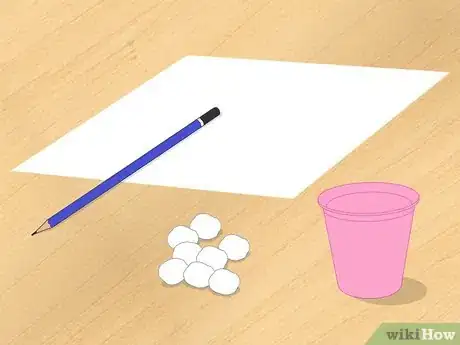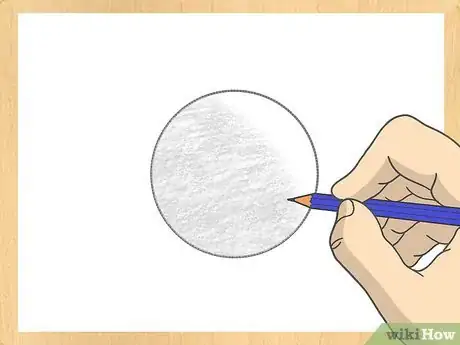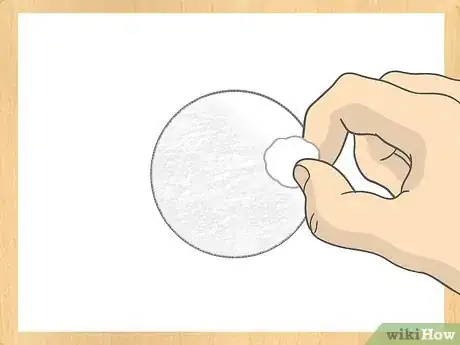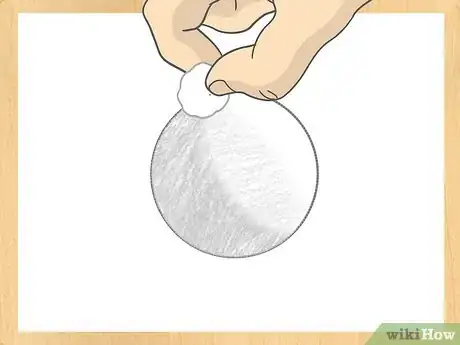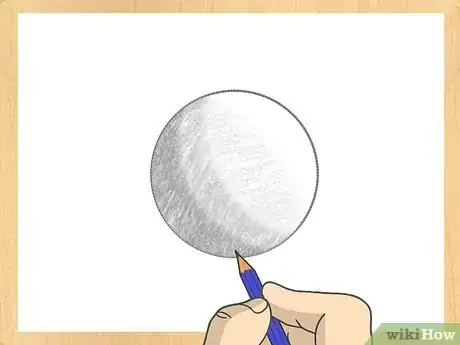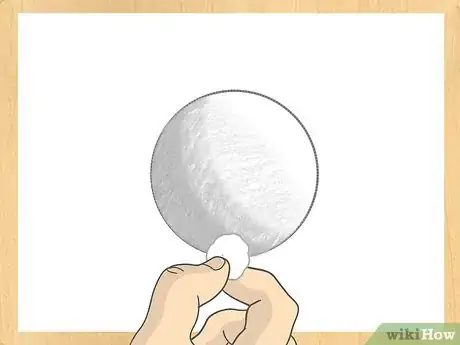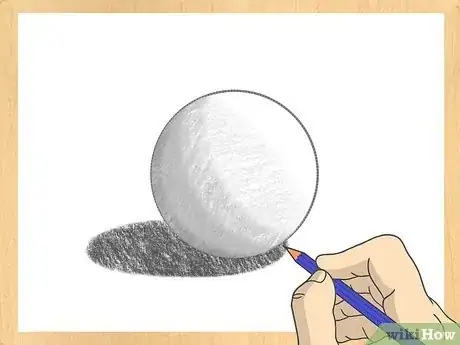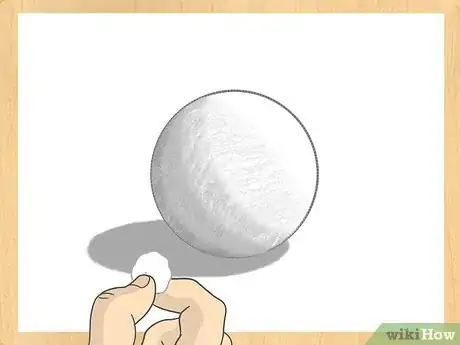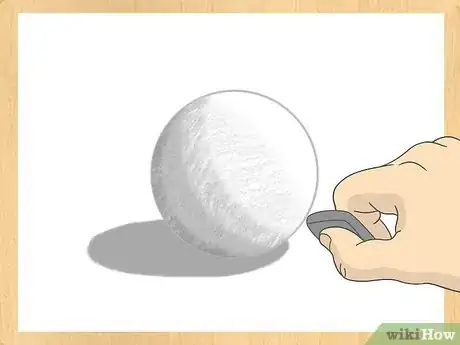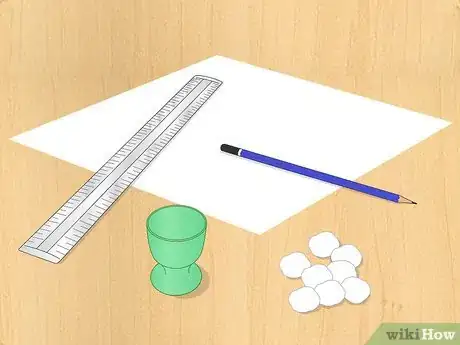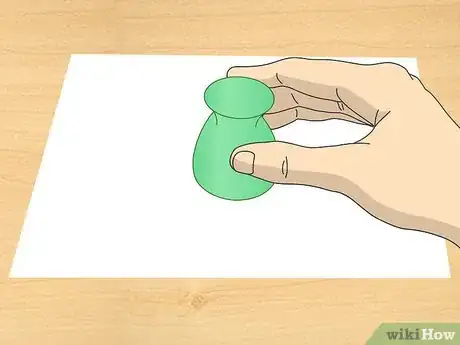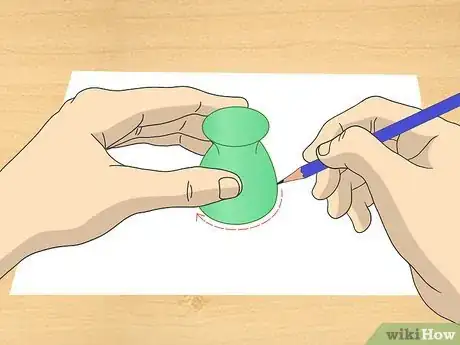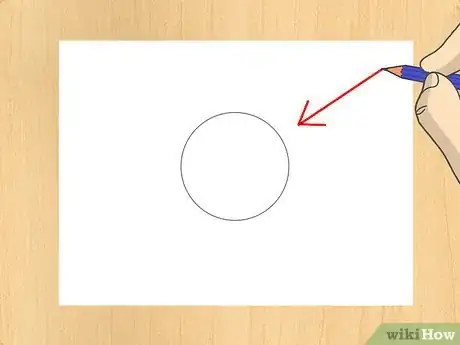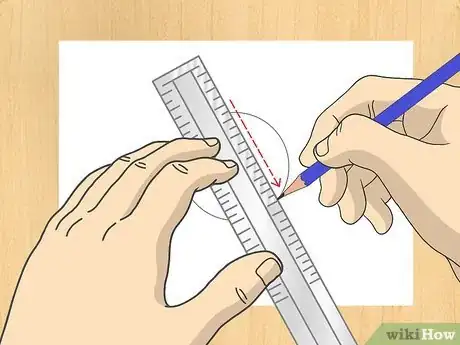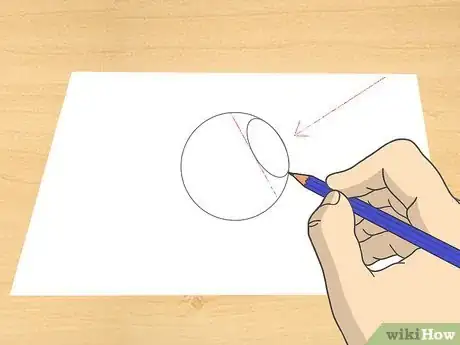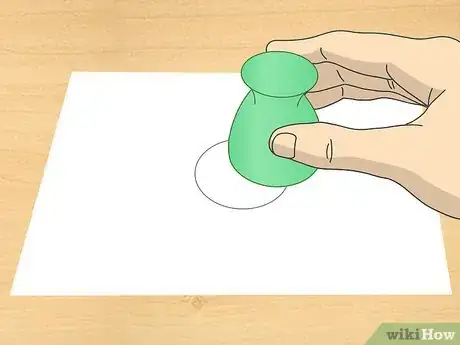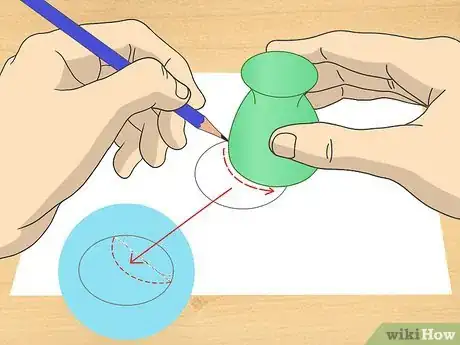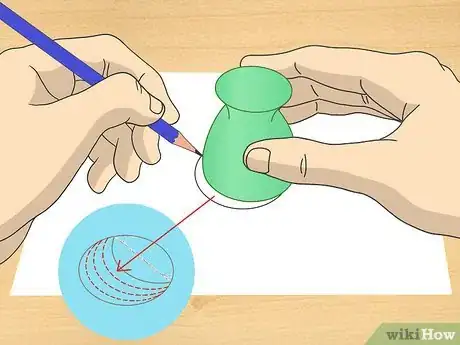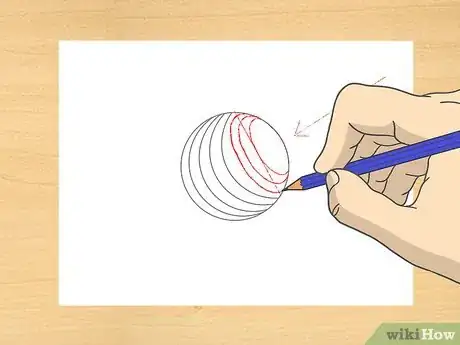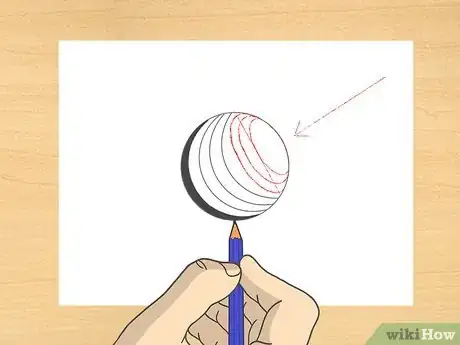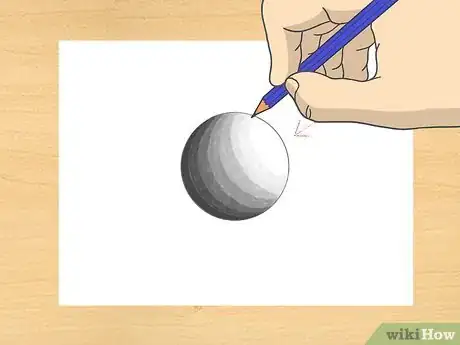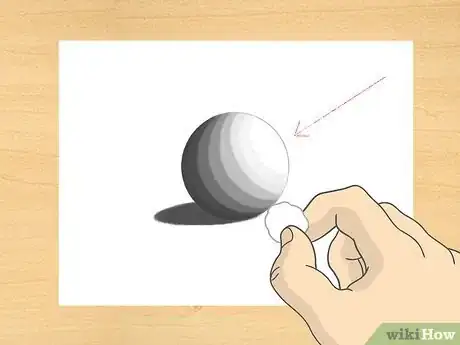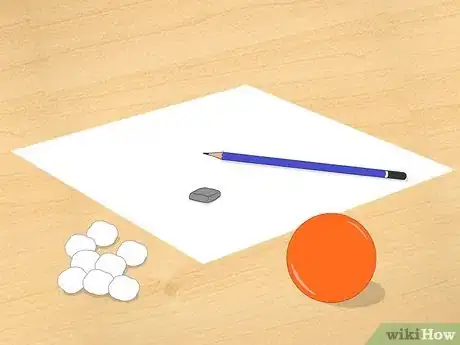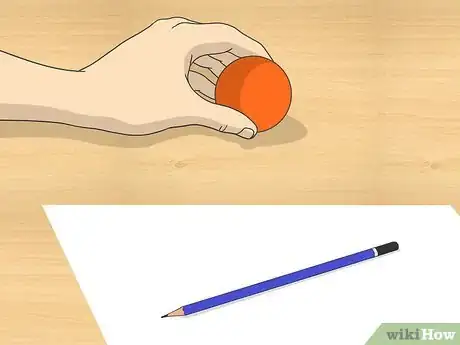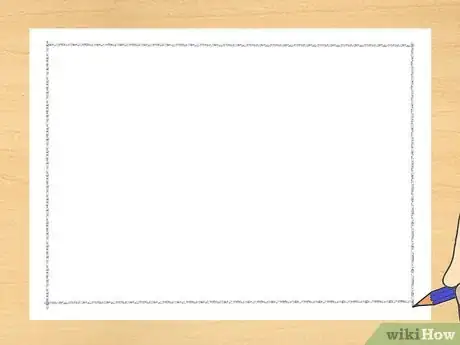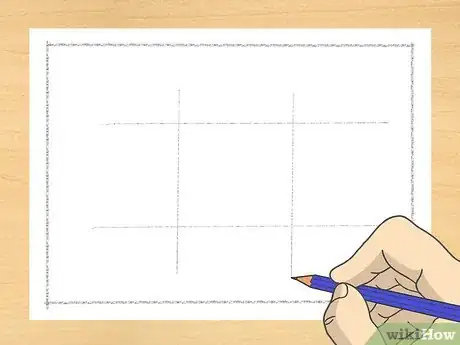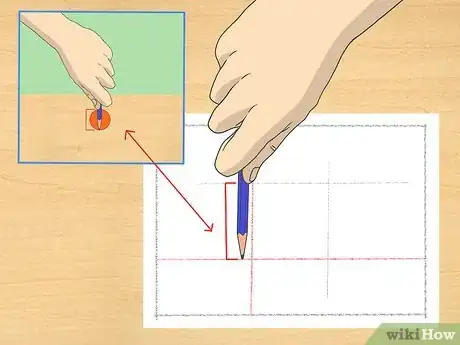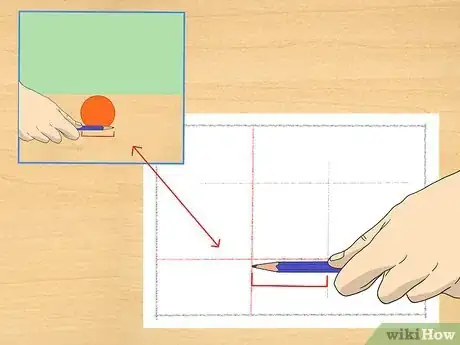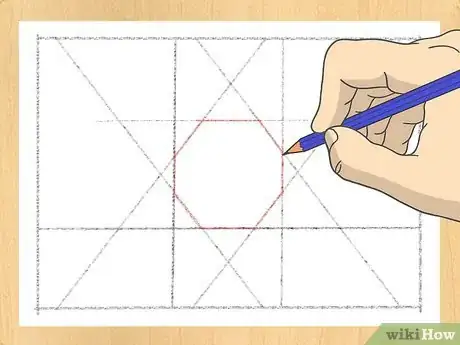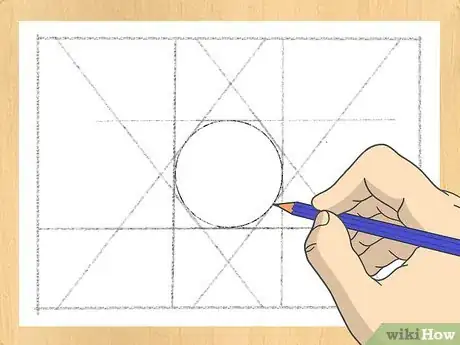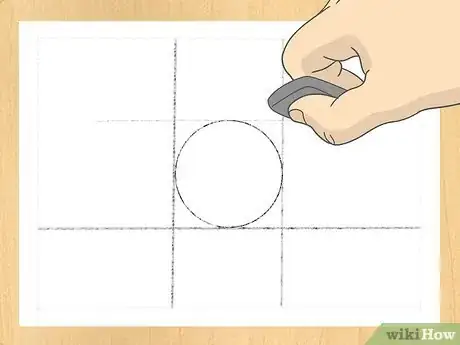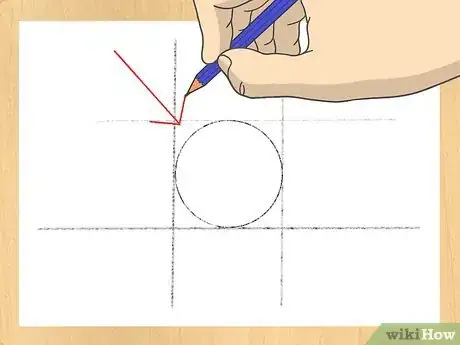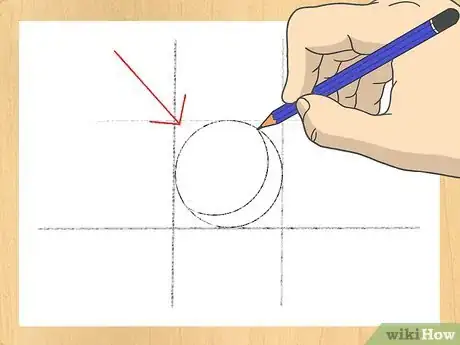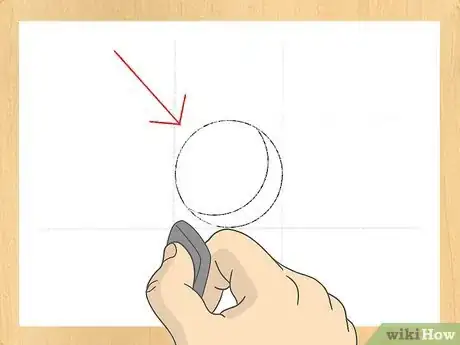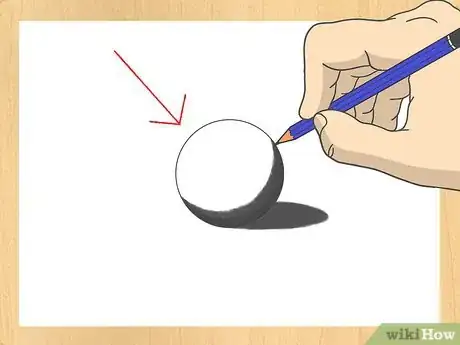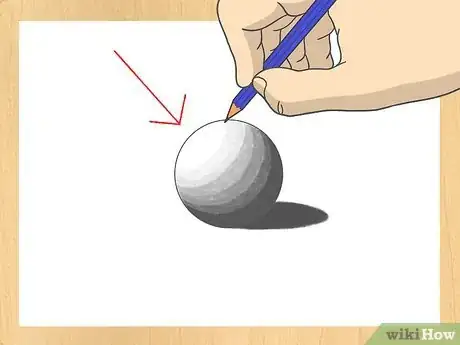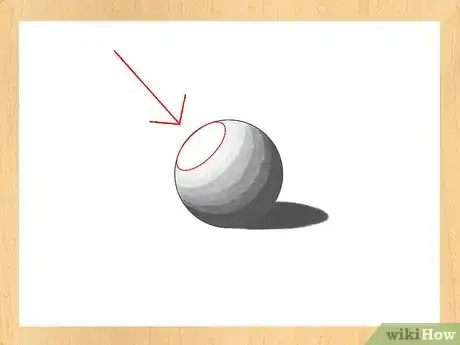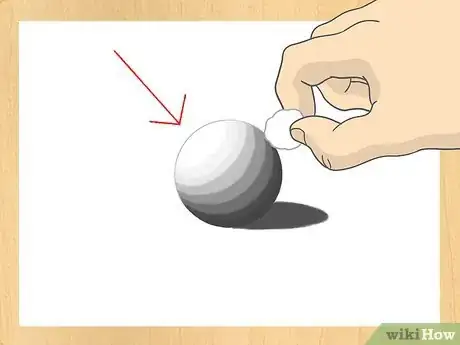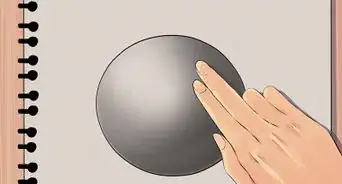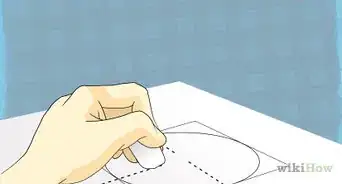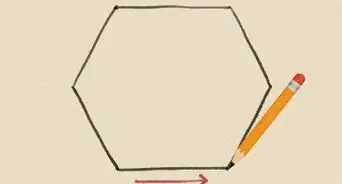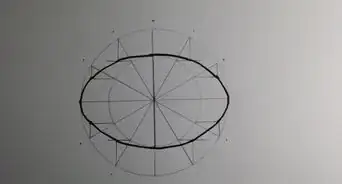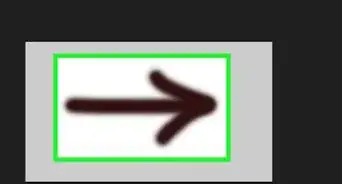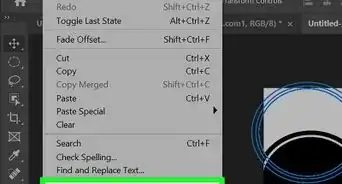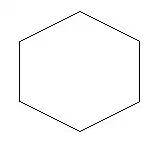This article was co-authored by Kelly Medford. Kelly Medford is an American painter based in Rome, Italy. She studied classical painting, drawing and printmaking both in the U.S. and in Italy. She works primarily en plein air on the streets of Rome, and also travels for private international collectors on commission. She founded Sketching Rome Tours in 2012 where she teaches sketchbook journaling to visitors of Rome. Kelly is a graduate of the Florence Academy of Art.
This article has been viewed 97,890 times.
A sphere is different from a circle because it is 3-dimensional, or 3D. Drawing a sphere can be tricky due to the shading and highlighting involved to make it look 3D. However, all you need are a few simple tools and some imagination to correctly draw a sphere.
Steps
-
1Gather the materials you need to draw the sphere. This is a basic method for drawing a sphere, so minimal materials are needed.[1]
- Sketch pad or paper
- Pencil
- Cotton balls or tissues
- Circular object
-
2Trace your circular object on the paper. You can use a small bowl, a glass, a mug, or another object with a circular shape or base.[2]
- Tracing the circular object allows you to focus on shading the sphere rather than on learning how to draw a perfect circle.
Advertisement -
3Choose where your light source will be. Once you decide the angle from which your light source will come, draw an arrow toward the circle from that direction.
- You will later leave an untouched spot on the sphere, below that arrow, to signify the highlight from the light source.[3]
-
4Fill the sphere with very light shading.[4] Avoid pressing too hard with your pencil while you shade, as this is your first layer of shading. You will add additional layers of darker shading in later steps.
- Leave the circular or oval-shaped spot untouched, below where the arrow points from the direction of the light source.
-
5Smooth the shading with a cotton ball or tissue. Gently rub over the light shading, taking care not to smear the graphite out of the edges of your circle.[5]
- Remember to leave your highlight spot untouched, so also take care not to smear graphite into that area.
-
6Add more shading to areas of the sphere that the light source minimally reaches.[6] Gently shade again around most of the circle, making darker shading on the sides of the sphere where the light source cannot reach.
- This shading is called the mid-tone. Around the middle of your sphere, you should have about medium tones of shading.
-
7Repeat smoothing out the shading with a cotton ball or tissue. Again, take care to avoid smearing the highlight spot and smearing outside the edges of the circle.[7]
-
8Darken the outer edges of the sphere, particularly on the bottom and opposite side of the light source.[8] The light source cannot reach these areas, so naturally, they should be darker.
- As you get further from the light source, the shading should get darker. However, they should not be as dark at the space directly below the sphere.
-
9Smooth the darkened shading again.[9] Maintaining a smooth-looking sphere is important in order to help it look realistic. Use your cotton ball or tissue to do this.
-
10Make the crescent edge opposite the light source the darkest.[10] This is the final shading step, creating the core shadow.
- Shade the border moderately dark, and taper it into a crescent shape before tapering off on the other side. Keep this darkest area of shading close to the bottom edge of the sphere; it should be no more than ½ centimeter in thickness.
-
11Rub your cotton ball or tissue over the dark crescent at the bottom to smooth it one last time.[11] This will help to blend the core shadow into the rest of the sphere.
-
12Clean up the edges of the sphere by erasing any smudges that escaped the edges. You might also have stray line marks that went outside the edges. Take care not to erase anything within your sphere.[12]
Drawing a Sphere With an Egg Cup
-
1Prepare your materials on your desk or table. There are several things you will need to help you draw a sphere with this method, so be sure to have everything within reach.
- Sketch pad or paper
- Pencil
- Egg cup
- Ruler
- Blending tool, cotton ball, or tissue
-
2Place your egg cup upside-down on the paper. Keep it close to the middle of the page, if possible, to give yourself enough room on all sides.
- Remember that one side of your sphere will have the core shadow, which is the darkest part of the sphere, where the light source cannot reach.
-
3Trace the outline of the egg cup with a light line. When you lift the egg cup, you should be left with a perfect circle on your paper.
-
4Decide the direction of the your light source. Your light source will come from either the top left or the top right. The opposite side of the light source is where the core shadow will be.
- For a shadow that emerges from the left side of the sphere, your light source should be in the top right corner. Conversely, for a shadow that emerges from the right side of the sphere, the light source should be in the top left corner.
-
5Mark a light guideline, with a ruler, from your light source to a spot about 1 centimeter inside the circle. Lightly mark a point when you reach the 1 centimeter mark. Then, draw an arrow in the corner down toward the circle, showing the direction of the light.
-
6Draw a small oval shape around the point you just made 1 centimeter inside the circle. That point is the center of the highlight, meaning that the interior of the oval will not be shaded later.
-
7Place your egg cup over the circle so that the opposite edge of the light source can just be seen. This refers to the bottom edge of the circle opposite from the light source. Aim to leave about ½ centimeter between the original circle and the edge of your egg cup.
-
8Trace the curved edge of your egg cup from one side to the other in a light outline. The space you just created will be part of the core shadow of the sphere, the darkest part where the light source cannot reach.
- The shape can be described as an eclipse. Keep this in mind as you read further instructions.
-
9Repeat Steps 7 and 8 above, moving closer to the middle of the circle, three more times. You should now have four eclipses, made by the egg cup, on the bottom edge of the circle opposite the light source. These eclipses should take up approximately half of the circle.
- They will be used for mid-tone, or gradual shading of the sphere to help give it its 3D appearance.
-
10Freehand a few more mid-tone outlines on the side of the circle close to the light source. At this point, the egg cup is too big to make smaller mid-tone outlines.
- Lightly draw them in freehand form, using the shape of the small oval (i.e. the highlight spot) and expanding outward until you have three increasingly large ovals.
- It is acceptable to leave a gap between the largest oval and the middle-most eclipse from the egg cup.
-
11Shade the bottom-most eclipse as darkly as possible. This is the eclipse that is dedicated to being part of the core shadow, so it needs to be dark as you can get it with your pencil.
-
12Shade the proceeding eclipses gradually lighter shades. As you work your way upward, toward the highlight oval, each eclipse should be somewhat lighter than the next.
- When you get to the highlight spot, it should be completely untouched.
-
13Blend the tones together with a blending tool, a cotton ball, or a tissue. Work your way over the whole sphere, gently blending the different shading tones together so that they seamlessly taper from light to dark.
- Work from the lightest part—the highlight spot—to the darkest part to avoid pulling led from darker areas into lighter ones.
Drawing a Sphere With a Model
-
1Collect the materials you will need to help you draw a sphere. This method is a bit different in that you use an actual sphere, placed in front of you, as a model while you draw.
- A spherical object
- Sketch pad or paper
- Pencil
- Kneaded eraser
- Blending tool, cotton ball, or tissue
-
2Set up your spherical object as a model.[13] Place it on the table or desk in front of where you are sitting, and be sure that a light source is hitting it from one side. This will help you to see the highlights and shadows of the sphere.
-
3Draw a picture plane around the edges of your paper.[14] This is a simply a border that sits about 1 centimeter in from the edges of your paper.
- You do not need to use a ruler for this, although you can if you would like to do so.
-
4Sketch the boundaries of the sphere. This can just be an approximation, as you will measure the boundaries later.[15]
- Sketch four very light, short lines in an open square shape. They should not connect with each other; rather, they should signify the four sides of the square.
- The lines need to be extremely light so that they are easy to erase later when touching up your drawing.
-
5Indicate the horizontal and vertical axes within the boundaries. Lightly sketch the axes so that they just barely intersect with the boundaries you drew.[16]
- You can use comparative measurement to do this, meaning that you can create the size of your boundaries and axes by comparing the size of your model sphere to your pencil. Hold your pencil vertically so that it covers the sphere from top to bottom. Hold the tip of the pencil at the top of the sphere, and place your thumb on the pencil where it hits the bottom of the sphere. Lay your pencil on your paper without moving your thumb. Compare this height to the vertical axis you drew on your paper and adjust accordingly, if you choose. Repeat the process, except now measure the width of the sphere. Compare it to the horizontal axis you drew and, again, adjust accordingly if you would like.
-
6Compare the width and your height of your axes. These should be as close to the same in length as possible.[17]
- Using your pencil, place it along the vertical axis with the tip at the top. Just like before, place your thumb at the bottom of the axis. Now, turn your pencil horizontally and compare that distance to the horizontal axis. Adjust the axes if one is longer than the other.
-
7Draw the contour of the sphere using the boundaries you made in Step 4. Imagine that the edges of your sphere were made up of a series of planes, made up by several short, straight lines. Begin drawing the edges of your sphere this way, with a contour.[18]
- Add a first series of contour lines, in the suggested shape of an octagon. These lines will just barely intersect on the ends.
- Then, draw a series of smaller contour lines within the first set. This new set does not need to intersect, as they are adding to the rounded shape of the contour.
-
8Sketch transitions from one plane line to the next to make curves. Where the contour plane lines do not connect, draw a small curved transition line to connect them.[19]
- These help add to the circular shape you are creating.
-
9Clean up the edges of your contour with your eraser.[20] Once you have made all of the contour lines on your circle, you need to clean up and thin down your circle.
- Flatten your kneaded eraser to help you do this. It will make a thin, flat edge so that you can cleanly erase the stray marks and thickness of your new circle.
-
10Decide where you want your light source to be. Draw an arrow from the direction of the light source, down toward the circle. This indicates where your highlight spot will be.
-
11Draw a curved line on the opposite side of the circle from the light source. This curved line will connect the transitions of the axis you drew.[21]
- If your light source is in the top left, then the curved line should follow along the lower right side of the circle. Visa versa, if it is in the top right, then the curved line should be placed along the lower left side.
- This curved line is the start of the core shadow.
-
12Erase the horizontal and vertical axes after you draw the curved line. Now that the circle and start of the core shadow are drawn, the axes are no longer needed.[22]
-
13Shade in the occlusion shadow.[23] This is the small shadow just below the sphere; in the previous methods, we called it the core shadow. The light source cannot reach this spot; therefore, it is very dark.
- Keep this very dark shadow limited to the bottom of the sphere, with each edge tapering off just as it starts to creep up the sides of the sphere.
-
14Fill in the form shadow. Between the curved line you drew and the edge of the sphere, shade in all of that space to a medium darkness.[24]
- Smooth the shading with a blending tool, a cotton ball, or a tissue when you are done shading the area.
-
15Continue shading from dark to light, working your way from bottom to top.[25] You will have a highlight spot where your light source is, so as you work your way to the top, remember to leave a spot untouched.
- As you move toward the top of the sphere, you will shade in what is called a half-tone. This is a lighter shading than what you did on the lower half of the sphere, opposite of the light source.
-
16Leave the highlight spot near the light source on the sphere. As you shade toward the light source, be sure to leave a circular or oval-shaped highlight spot.
- The shading all around the highlight spot needs to be very lightly done to reflect that the light source reflects off of that area.
-
17Blend in the shading so that the tones merge together. Using your blending tool, cotton ball, or tissue, gently rub the shading from light-to-dark to blend the tones together and smooth the appearance of your drawing.[26]
- Remember to go from light-to-dark so that no excess graphite is smudged from dark areas into lighter ones.
Community Q&A
-
QuestionHow do I draw a pillow?
 Community AnswerIt's basically a relaxed rectangle with little nub edges. Look at a real pillow for reference and use basic shapes.
Community AnswerIt's basically a relaxed rectangle with little nub edges. Look at a real pillow for reference and use basic shapes. -
QuestionCan I use a cotton swab for blending?
 Community AnswerYes, you can use a cotton swab for blending.
Community AnswerYes, you can use a cotton swab for blending. -
QuestionHow do I draw the planet Mercury?
 Community AnswerMercury is a small planet, quite near the sun, and covered in craters. Find pictures of it online to give you a better idea of its features and coloration, then copy it to the best of your ability.
Community AnswerMercury is a small planet, quite near the sun, and covered in craters. Find pictures of it online to give you a better idea of its features and coloration, then copy it to the best of your ability.
References
- ↑ https://blog.udemy.com/how-to-draw-a-sphere/
- ↑ https://blog.udemy.com/how-to-draw-a-sphere/
- ↑ Kelly Medford. Professional Artist. Expert Interview. 10 March 2021
- ↑ https://blog.udemy.com/how-to-draw-a-sphere/
- ↑ https://blog.udemy.com/how-to-draw-a-sphere/
- ↑ https://blog.udemy.com/how-to-draw-a-sphere/
- ↑ https://blog.udemy.com/how-to-draw-a-sphere/
- ↑ https://blog.udemy.com/how-to-draw-a-sphere/
- ↑ https://blog.udemy.com/how-to-draw-a-sphere/
- ↑ https://blog.udemy.com/how-to-draw-a-sphere/
- ↑ https://blog.udemy.com/how-to-draw-a-sphere/
- ↑ https://blog.udemy.com/how-to-draw-a-sphere/
- ↑ http://www.thedrawingsource.com/sphere-drawing.html
- ↑ http://www.thedrawingsource.com/sphere-drawing.html
- ↑ http://www.thedrawingsource.com/sphere-drawing.html
- ↑ http://www.thedrawingsource.com/sphere-drawing.html
- ↑ http://www.thedrawingsource.com/sphere-drawing.html
- ↑ http://www.thedrawingsource.com/sphere-drawing.html
- ↑ http://www.thedrawingsource.com/sphere-drawing.html
- ↑ http://www.thedrawingsource.com/sphere-drawing.html
- ↑ http://www.thedrawingsource.com/sphere-drawing.html
- ↑ http://www.thedrawingsource.com/sphere-drawing.html
- ↑ http://www.thedrawingsource.com/sphere-drawing-tutorial.html
- ↑ http://www.thedrawingsource.com/shading-a-sphere.html
- ↑ http://www.thedrawingsource.com/shading-a-sphere.html
- ↑ Kelly Medford. Professional Artist. Expert Interview. 10 March 2021
About This Article
To draw a sphere, start by tracing a circle. Then, to create shadow and round out your sphere, choose an imaginary light source, and draw an arrow pointing from that direction. Color in the circle lightly, leaving the spot right below the arrow blank, since the brightest spot will be closest to the light source. Continue adding smaller, darker layers along the opposite edge of the light source, then use a tissue or a cotton ball to blend out your shading. Finally, draw a dark crescent shadow below the darkest point, and color it darker than any of the shading on your sphere. To learn how to use guidelines to draw a sphere even more precisely, keep reading!
